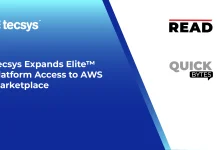Hi Jason, could you tell us about your journey in MarTech?
This September will mark my third year with Metadata. I’ve worked at small companies before, but this was my first high-growth B2B SaaS startup running the full marketing suite. I ultimately created this role out of an ah-ha moment. As a marketing ops leader who everyone sold and marketed to, I knew instantaneously from my seat at those leadership tables that what Metadata was building was exactly what marketing needed and where it was inevitably heading.
My roots in marketing started with website analytics at my first consulting job. The company I was working with asked if I knew Omniture, the software Expedia was replacing its homegrown analytics with. I wasn’t familiar with it so I learned it. It was then that I made the transition into marketing operations and found myself at the leadership tables of larger companies like Getty Images, Workfront, and Tableau. I saw the inner workings of MarTech and knew I was ready for the big time in a Head of Marketing role. Enter Metadata
What challenges did the Covid-19 pandemic pose for your marketing team?
Not so much challenges, but changes. We’re now a remote-first culture. There is a lot of emphasis on having quality in-person time when it’s called for, but we’re seeing a lot of success with this hybrid way of conducting business. Everyone’s still in lockstep with each other remotely. If anything, the pandemic has made us more economically responsible. Adjusting budgets allows for experimentation, which I love. For instance, when Covid-19 hit, my marketing budget got slashed by 60%, but my goals remained unchanged. I was able to take those real constraints and use it to get creative. Then, we were off to the races. I identified a new campaign tactic and used it to significantly increase the number of demo requests I was driving. The results? I was able to increase demand by over 200% with 60% less budget! That campaign is still working hard for us today.
What sets Metadata apart from the competition?
Metadata’s technology is a true differentiator as the first Operating System for B2B marketing. We’re not trying to be like anyone else. We’re just trying to solve the biggest challenges in B2B marketing through one, single tool that automates the repeatable, mundane parts of running paid campaigns so marketers can spend more time on strategy and creativity. Until now, no technology has truly been built as a solution for what I think is the most prevalent issue in B2B – lack of consistent, predictable growth that gets better and cheaper overtime. Metadata is a platform that operates, not replaces, existing marketing and sales technologies in a scalable, automated way to deliver strong, tangible results.
What direction do you envisage B2B evolving, in the years to come?
As we replace the old guard in B2B with a younger generation, we’ll see it become more entertaining, a lot more video, more personal connection and building relationships and trust with your audience. At the end of the day we’re still selling to people – and just because we’re trying to sell them something that costs a lot of money, those buyers are still humans who like to be entertained, who like to laugh. At the same time, we’ll continue to get more and more data driven, finding new, smarter and better ways to use data to improve the customer experience – precisely target and personalize our messages. And hopefully if things go right, B2B marketing will be seen as a profit center, not as a cost of doing business.
What 3 things that business owners can do to optimize their digital outreach?
- Be different
- Experiment… A LOT.
- Focus on business outcomes, not vanity metrics
As a marketing leader, what are your thoughts on how ROMI and its use as a metric to define success?
With total dollars in and total dollars out, we should expect marketing to be somewhat of a profit center. If you can’t bring more money in than what you’re spending, then you shouldn’t be doing marketing. So, ROMI as a general metric – it’s great. Where it starts to get muddy is when people want individual attribution on one given program or tactic. That’s when we start to lose our way.
Your top pick for a book on marketing that everyone should read?
I don’t read many books. I’ve found when I do, I tend to put false ceilings on myself. I recommend trusting your gut. Pull more on your intuition. In this role, you have to be close to your customers – closer than ever before. Even if you think your gut says one thing, vetting it with a smaller population of other people who think like you and have similar responsibilities will get you further.
Could you name one other marketer that you would like to see featured here?
Mark Huber, our Head of Brand & Product Marketing at Metadata.
Where do you see Marketing Automation going? How will it impact the traditional sales and marketing channels?
Marketing automation is only going to further alleviate marketers from the mundane, technical, repetitive tasks, so they can dive into the more strategic, creative projects – that’s where the fun is. Marketers will have the freedom to be more agile to test things and experiment.
Could you name the Top 5 apps/platforms you use for marketing?
- Metadata
- LinkedIn Ads
- G2 Intent
- Asana
- Meme generator
Thanks Jason!




